I came across this table, if I’m not mistaken published in 2016, which indicates the presumed datings of the burials at the site of Monte ‘e Prama. From the datings, one could succinctly state that these were people who lived during the nuragic period and (perhaps) with some sporadic Phoenician presence.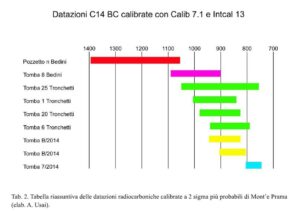 Apart from considering, as often mentioned, (and confirmed also by the words of Dimitri Baramki, curator of the Beirut museum), that “the Phoenician race” emerges only after the conquest of the land of Canaan by the Sea Peoples who “set up family” with the Canaanites (which could support the hypothesis of Phoenicians understood as “returning emigrants”), the same table recalls a previous post that I will reproduce below:
Apart from considering, as often mentioned, (and confirmed also by the words of Dimitri Baramki, curator of the Beirut museum), that “the Phoenician race” emerges only after the conquest of the land of Canaan by the Sea Peoples who “set up family” with the Canaanites (which could support the hypothesis of Phoenicians understood as “returning emigrants”), the same table recalls a previous post that I will reproduce below: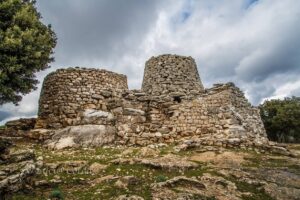 In 2006, Professor Francesco Cucca wrote that “In Sardinia there is a considerable genetic variability among individuals, but there is no significant genetic heterogeneity in the distribution of this variability when comparing the main macro-regions of the island. The fact that macro-regions like Barbagia do not differ significantly from coastal regions such as the area of Cagliari or Oristano indicates that the genetic contribution of the various populations that have occupied Sardinia, Phoenicians, Punics, Romans, Byzantines, etc., has been essentially marginal.”
In 2006, Professor Francesco Cucca wrote that “In Sardinia there is a considerable genetic variability among individuals, but there is no significant genetic heterogeneity in the distribution of this variability when comparing the main macro-regions of the island. The fact that macro-regions like Barbagia do not differ significantly from coastal regions such as the area of Cagliari or Oristano indicates that the genetic contribution of the various populations that have occupied Sardinia, Phoenicians, Punics, Romans, Byzantines, etc., has been essentially marginal.”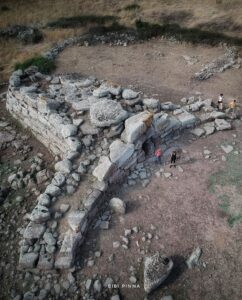 During a public conference held in November 2009, Professor Cucca also stated that “today, for various reasons, the Sardinian population is the most studied in the world from a genetic perspective, also thanks to funding from abroad and some American Institutes. What do we know about the Sardinians? They are a very ancient people, whose common ancestor, quite numerous, dates back to about 20,000 years ago. The Sardinians are of European origin, but they differ from these peoples in genetic terms, as they present affinities with them, but also some uniqueness.”
During a public conference held in November 2009, Professor Cucca also stated that “today, for various reasons, the Sardinian population is the most studied in the world from a genetic perspective, also thanks to funding from abroad and some American Institutes. What do we know about the Sardinians? They are a very ancient people, whose common ancestor, quite numerous, dates back to about 20,000 years ago. The Sardinians are of European origin, but they differ from these peoples in genetic terms, as they present affinities with them, but also some uniqueness.”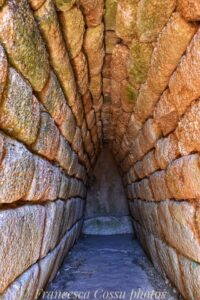 Studies on genetics disprove any form of localism among Sardinians: they all have the same ancestors and are descendants of the Nuragic people. Around 14,000 years ago, the Sardinian population expanded demographically, an expansion that is significantly greater than that of other European populations. This confirms the importance of Sardinia during that period. In conclusion of the subsequent research conducted by Professor Cucca, alongside a large international team and published in August 2013 in the prestigious American journal “Science,” he stated that “the genetic heritage of Sardinians contains the entirety of what is found in all other Europeans.” Ultimately, it can be argued that the most popular theories, which favor the East-West direction in the migrations of Mediterranean populations, should be fundamentally overturned. This thesis finds further confirmation in studies on the origin of the Minoans (Cretans) conducted by a team of geneticists, including Professor George Stamatoyannopoulos from the University of Washington in Seattle, published in the journal “Nature Communications.” From these studies, also cited on the Science page of “Corriere della Sera” in May 2013, it emerges particularly that the Minoans are originally from Europe and show significant similarities with the Sardinians.
Studies on genetics disprove any form of localism among Sardinians: they all have the same ancestors and are descendants of the Nuragic people. Around 14,000 years ago, the Sardinian population expanded demographically, an expansion that is significantly greater than that of other European populations. This confirms the importance of Sardinia during that period. In conclusion of the subsequent research conducted by Professor Cucca, alongside a large international team and published in August 2013 in the prestigious American journal “Science,” he stated that “the genetic heritage of Sardinians contains the entirety of what is found in all other Europeans.” Ultimately, it can be argued that the most popular theories, which favor the East-West direction in the migrations of Mediterranean populations, should be fundamentally overturned. This thesis finds further confirmation in studies on the origin of the Minoans (Cretans) conducted by a team of geneticists, including Professor George Stamatoyannopoulos from the University of Washington in Seattle, published in the journal “Nature Communications.” From these studies, also cited on the Science page of “Corriere della Sera” in May 2013, it emerges particularly that the Minoans are originally from Europe and show significant similarities with the Sardinians.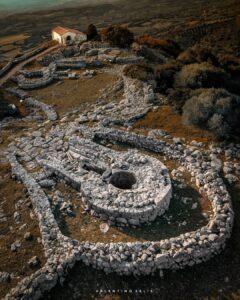 One of the concepts that arise from these important genetic studies is that the “core” identity of our people originates from periods prior to the various “colonizations” or “conquests” that have occurred over time. Unfortunately, these periods have been poorly investigated, leaving us with important material testimonies that are often forgotten and trivialized. A heritage composed of thousands of domus de janas, menhirs, dolmens, giants’ tombs, wells, and sacred sources, and especially from the over ten thousand nuraghi that dot the entire island: a global uniqueness that represents the most evident emblem of our land.
One of the concepts that arise from these important genetic studies is that the “core” identity of our people originates from periods prior to the various “colonizations” or “conquests” that have occurred over time. Unfortunately, these periods have been poorly investigated, leaving us with important material testimonies that are often forgotten and trivialized. A heritage composed of thousands of domus de janas, menhirs, dolmens, giants’ tombs, wells, and sacred sources, and especially from the over ten thousand nuraghi that dot the entire island: a global uniqueness that represents the most evident emblem of our land.
All of these considerations, certainly not insignificant, lead to the logical conclusion that, ultimately…. we should simply rewrite history!
In the photos: The nuraghe Serbissi in Osini (Lucia Corda); The giants’ tomb Sa Domu ‘e s’Orku in Siddi (Bibi Pinna); The giants’ tomb of Madau in Fonni (Francesca Cossu); The water sanctuary of Santa Vittoria in Serri (Valentino Selis). On the cover: The nuragic palace of Santu Antine in Torralba (Bibi Pinna).

